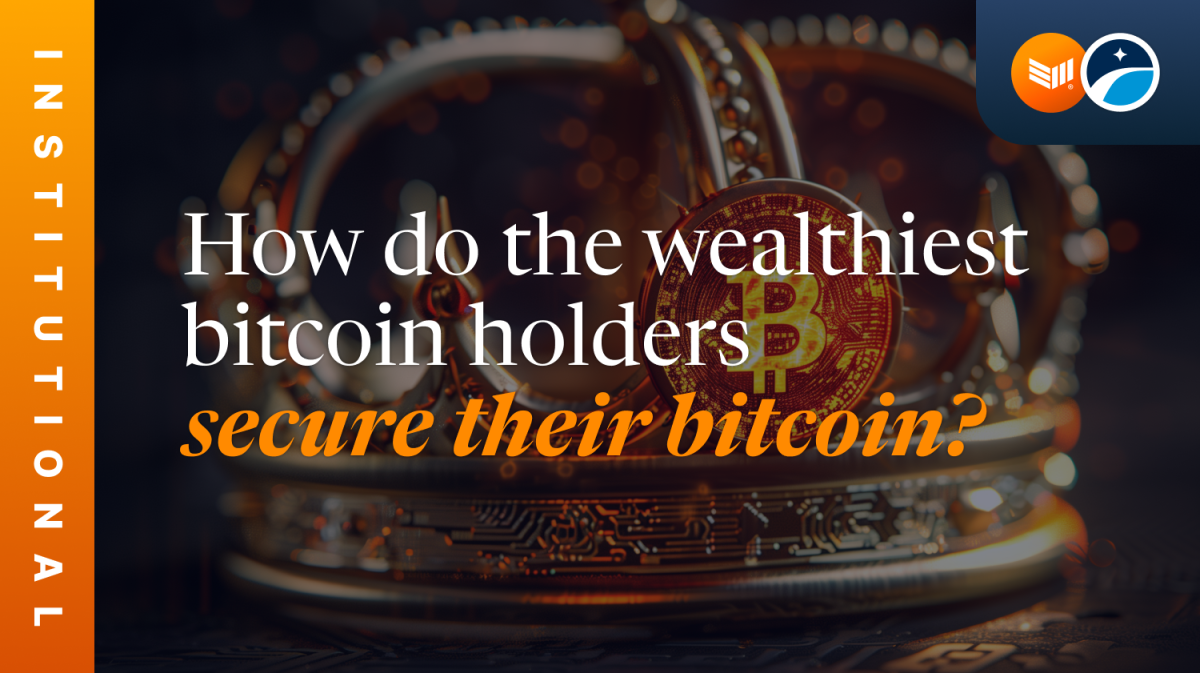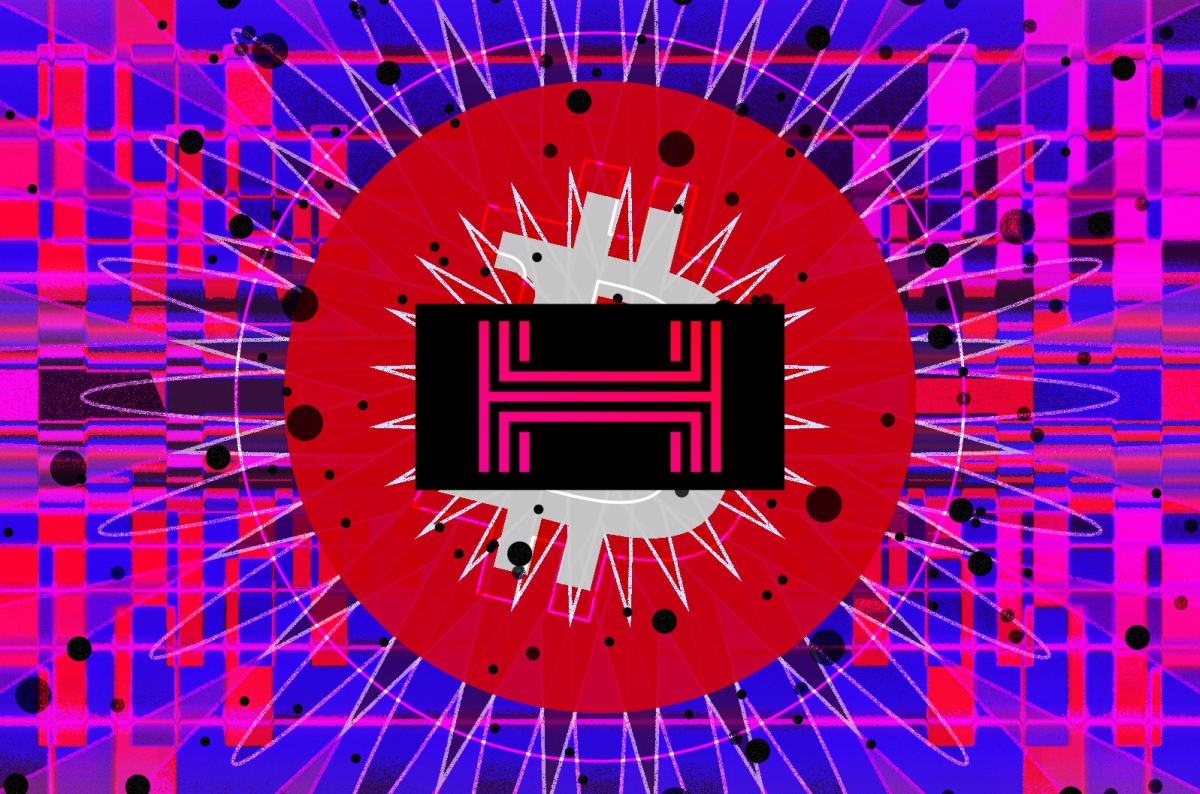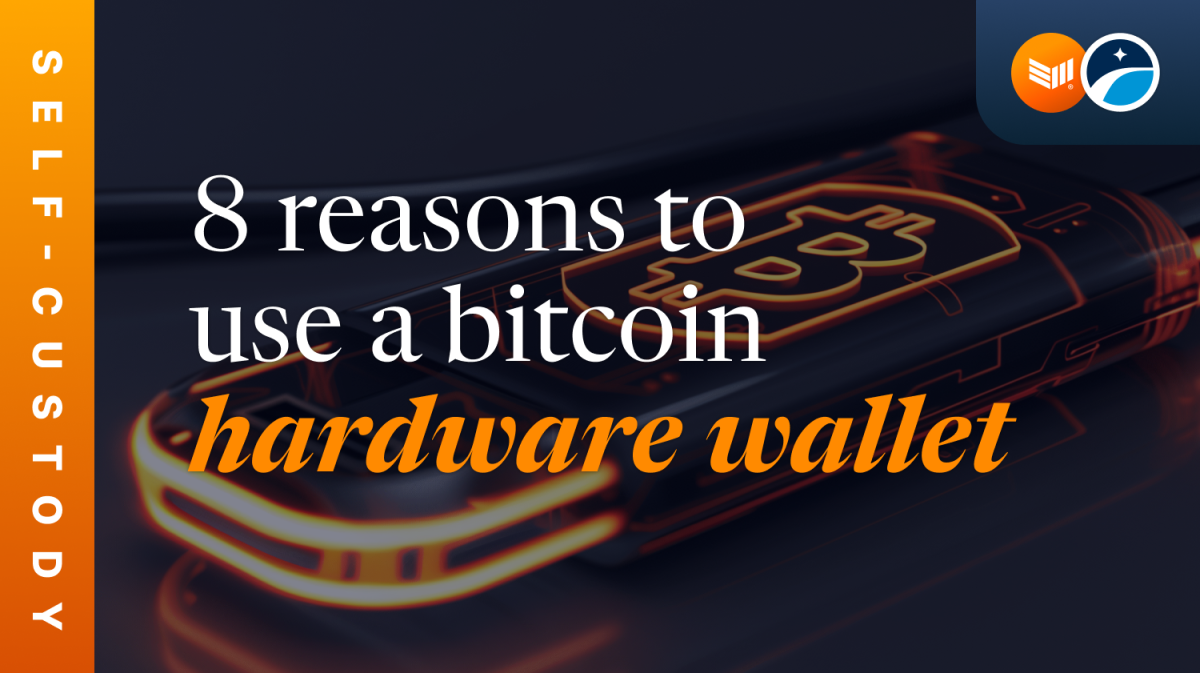Month: March 2024
How do the Wealthiest Bitcoin Holders Secure their Bitcoin?
If you want to hold a large amount of bitcoin securely, it makes sense to investigate how the wealthiest bitcoin holders handle this task. While wealth doesn’t cause infallibility, these entities have the most to lose from making a mistake. They should be highly motivated to put substantial thought and research into the security of their bitcoin.
Identifying the wealthiest bitcoin holders can be difficult, and asking them to reveal the full details of their security is unlikely to be successful. However, the bitcoin blockchain provides us with some valuable information. The transaction history and balances of all bitcoin addresses is publicly-available knowledge.
What information can we gather?
If an entity (person or group) owns a lot of bitcoin, it’s possible that they keep their bitcoin spread across many different addresses, each with a smaller-sized balance. Those addresses wouldn’t necessarily stand out from the crowd. In some cases, it’s impossible to associate different addresses with the same wallet or owner. In other cases, association between addresses requires blockchain analysis, often relying on advanced techniques and assumptions which are not guaranteed to provide accurate information.
Although it’s challenging to definitively identify the wealthiest entities in terms of bitcoin, and precisely how much bitcoin they own, it’s trivial to identify the wealthiest bitcoin addresses. There are a few websites that track these addresses in real time. The nature of these addresses can provide a lot of clues about how the bitcoin is secured.
For example, if you are familiar with address types, you’ll know that any address that begins with a “1” is a P2PKH address, and therefore must be a singlesig arrangement. Similarly, any address that begins with “bc1q” and has a length of 42 characters is a P2WPKH address, and must also be a singlesig address. Bitcoin held by one of these address types isn’t utilizing multisig protection. Using SSS or MPC would be the only way to achieve institutional-grade security, as discussed in our article covering thresholds.
Meanwhile, any address that begins with a “3” is a P2SH address. Any address that begins with “bc1q” and has a length of 62 characters is a P2WSH address. These address types have the possibility of utilizing multisig. However, only after bitcoin has been spent out of these addresses will the custody structure be revealed. Some P2SH addresses are actually singlesig, a structure that was temporarily popular while SegWit was being initially adopted. Therefore, if one of these address types has never been spent out of, the custody structure is unknown.
Ready to upgrade your Bitcoin security? Visit here to get an annual Bitcoin Magazine subscription ($79 value) when you sign up for an Unchined multisig vault.
Looking at the data
Let’s take a look at the 81 addresses which each hold more than 10,000 bitcoin, as of January 30, 2024. Altogether, these addresses hold more than 2.5 million bitcoin.
Bitcoin Balance
Address
Custody Structure
248,597
34xp4vRoCGJym3xR7yCVPFHoCNxv4Twseo
Singlesig
204,010
bc1qgdjqv0av3q56jvd82tkdjpy7gdp9ut8tlqmgrpmv24sq90ecnvqqjwvw97
3-of-5 Multisig
127,136
bc1ql49ydapnjafl5t2cp9zqpjwe6pdgmxy98859v2
Singlesig
115,177
39884E3j6KZj82FK4vcCrkUvWYL5MQaS3v
Unknown
94,643
bc1qazcm763858nkj2dj986etajv6wquslv8uxwczt
Singlesig
94,505
37XuVSEpWW4trkfmvWzegTHQt7BdktSKUs
Singlesig
79,957*
1FeexV6bAHb8ybZjqQMjJrcCrHGW9sb6uF
Singlesig**
73,393
3M219KR5vEneNb47ewrPfWyb5jQ2DjxRP6
Singlesig
69,370
bc1qa5wkgaew2dkv56kfvj49j0av5nml45x9ek9hz6
Singlesig
68,200
3LYJfcfHPXYJreMsASk2jkn69LWEYKzexb
Singlesig
66,465
bc1qjasf9z3h7w3jspkhtgatgpyvvzgpa2wwd2lr0eh5tx44reyn2k7sfc27a4
3-of-5 Multisig
59,300
bc1qd4ysezhmypwty5dnw7c8nqy5h5nxg0xqsvaefd0qn5kq32vwnwqqgv4rzr
3-of-5 Multisig
53,880
1LdRcdxfbSnmCYYNdeYpUnztiYzVfBEQeC
Singlesig**
51,830
1AC4fMwgY8j9onSbXEWeH6Zan8QGMSdmtA
Singlesig
44,000
1LruNZjwamWJXThX2Y8C2d47QqhAkkc5os
Singlesig
43,602
1Ay8vMC7R1UbyCCZRVULMV7iQpHSAbguJP
Singlesig
41,334
3LCGsSmfr24demGvriN4e3ft8wEcDuHFqh
2-of-2 Multisig
37,932
bc1qs5vdqkusz4v7qac8ynx0vt9jrekwuupx2fl5udp9jql3sr03z3gsr2mf0f
3-of-6 Multisig
37,927
3LQUu4v9z6KNch71j7kbj8GPeAGUo1FW6a
Unknown
36,000
bc1q7ydrtdn8z62xhslqyqtyt38mm4e2c4h3mxjkug
Singlesig
32,321
12XqeqZRVkBDgmPLVY4ZC6Y4ruUUEug8Fx
Singlesig
32,019
3MgEAFWu1HKSnZ5ZsC8qf61ZW18xrP5pgd
2-of-3 Multisig
31,643
bc1qx9t2l3pyny2spqpqlye8svce70nppwtaxwdrp4
Singlesig
31,379
bc1qjh0akslml59uuczddqu0y4p3vj64hg5mc94c40
Singlesig
31,275
3FHNBLobJnbCTFTVakh5TXmEneyf5PT61B
Unknown
31,000*
12ib7dApVFvg82TXKycWBNpN8kFyiAN1dr
Singlesig**
30,175
bc1qf2yvj48mzkj7uf8lc2a9sa7w983qe256l5c8fs
Singlesig
28,151*
12tkqA9xSoowkzoERHMWNKsTey55YEBqkv
Singlesig**
26,140
1aXzEKiDJKzkPxTZy9zGc3y1nCDwDPub2
Singlesig**
24,606
19N9sDbJ7MDQcPFSjPNqjNDzyRNbNsQ6Zv
Singlesig
24,495
17MWdxfjPYP2PYhdy885QtihfbW181r1rn
Singlesig
24,067
38UmuUqPCrFmQo4khkomQwZ4VbY2nZMJ67
2-of-6 Multisig
23,969
19D5J8c59P2bAkWKvxSYw8scD3KUNWoZ1C
Singlesig
23,922
3G98jSULfhrES1J9HKfZdDjXx1sTNvHkhN
3-of-8 Multisig
23,789
1m5SViB9XNwsusvnnUqpfL9Q1E5EZxPHs
Singlesig
22,514
15cHRgVrGKz7qp2JL2N5mkB2MCFGLcnHxv
Singlesig
22,221
bc1qr4dl5wa7kl8yu792dceg9z5knl2gkn220lk7a9
Singlesig
20,544
bc1qm34lsc65zpw79lxes69zkqmk6ee3ewf0j77s3h
Singlesig
20,008
17rm2dvb439dZqyMe2d4D6AQJSgg6yeNRn
Singlesig
19,852
39gUvGynQ7Re3i15G3J2gp9DEB9LnLFPMN
Singlesig
19,679
3EMVdMehEq5SFipQ5UfbsfMsH223sSz9A9
4-of-8 Multisig
19,414*
1PeizMg76Cf96nUQrYg8xuoZWLQozU5zGW
Singlesig**
18,500
bc1qkz55x35wlnrkrn5n0nq4wwsme9vszrwavu5qf4
Singlesig
18,320
bc1qlhpkdeaaa345c4dw90hmvm3nn2r32f9jdj2v2p
Singlesig
17,969
bc1qtrxc0use4hlm7fl0j6t37z7qlwl5eppj8lywz6
Singlesig
17,945
bc1qhk0ghcywv0mlmcmz408sdaxudxuk9tvng9xx8g
Singlesig
17,928
bc1qcdqj2smprre85c78d942wx5tauw5n7uw92r7wr
Singlesig
16,858
bc1q5vwscmf85w2vlq0qvr33dgpvu5rlrd42cqw6qn
Singlesig
16,610
3FupZp77ySr7jwoLYEJ9mwzJpvoNBXsBnE
2-of-3 Multisig
16,453
bc1qx2x5cqhymfcnjtg902ky6u5t5htmt7fvqztdsm028hkrvxcl4t2sjtpd9l
2-of-2 Multisig
16,348
34HpHYiyQwg69gFmCq2BGHjF1DZnZnBeBP
Unknown
16,307
1BAuq7Vho2CEkVkUxbfU26LhwQjbCmWQkD
Singlesig
16,227
1N4WQbt63gnThPwHFZ1w9adEnE1xB8ctXk
Singlesig
16,231
bc1qchctnvmdva5z9vrpxkkxck64v7nmzdtyxsrq64
Singlesig
16,224
1932eKraQ3Ad9MeNBHb14WFQbNrLaKeEpT
Singlesig
15,900
32TiohXoCmHr87xVm3E9A3sLiWBJjYn1gf
4-of-6 Multisig
15,746
3JZq4atUahhuA9rLhXLMhhTo133J9rF97j
Singlesig
15,392
1GR9qNz7zgtaW5HwwVpEJWMnGWhsbsieCG
Singlesig
15,251
1KDWnWQNSGZZ8QHcKPgzz3DGRkmgVv9HhJ
Singlesig
14,676
bc1qvhxafz8dqk8c25jsx669yd6qrxhl5dx72dyryp
Singlesig
14,599
35pgGeez3ou6ofrpjt8T7bvC9t6RrUK4p6
2-of-3 Multisig
14,000
1BZaYtmXka1y3Byi2yvXCDG92Tjz7ecwYj
Singlesig
13,805
3NpXph8WN1U9hwXjg1bRtzTff1tPR2Gpw4
Unknown
13,003
bc1q4vxn43l44h30nkluqfxd9eckf45vr2awz38lwa
Singlesig
12,891
1KVpuCfhftkzJ67ZUegaMuaYey7qni7pPj
Singlesig
12,858
1CiAnTJn6eHTU89PeihdMhT7KcQZxVZ4fy
Singlesig
12,840
3BMEXqGpG4FxBA1KWhRFufXfSTRgzfDBhJ
3-of-4 Multisig
12,803
3HfD4pvF43jdu9dzVMEr1b8AnDHooRGc5t
3-of-9 Multisig
12,795
1DNUjpHPNKMoKYBHxJz2Sh1uQQdJkGsXj5
Singlesig
12,267
1PJiGp2yDLvUgqeBsuZVCBADArNsk6XEiw
Singlesig
11,985
1CKVszDdUp4ymGceAZpGzYEFr4RPNHYqaM
Singlesig
11,673
3A9qNS69dngSU2ak8BwZKEExeVnL2RqpYJ
Unknown
11,400
1Cr7EjvS8C7gfarREHCvFhd9gT3r46pfLb
Singlesig
11,115
bc1qgrvchamnmmaancn3vwea6elnvexpylzh30rhjz
Singlesig
10,840
bc1qk7fy6qumtdkjy765ujxqxe0my55ake0zefa2dmt6sjx2sr098d8qf26ufn
3-of-5 Multisig
10,771*
1F34duy2eeMz5mSrvFepVzy7Y1rBsnAyWC
Singlesig**
10,500
bc1qhd0r5kh3u9mhac7de58qd2rdfx4kkv84kpx302
Singlesig
10,486
bc1q93njc4we4s088a2nz6c9e6vthc5h4ake53rxmd
Singlesig
10,217
1Q8QR5k32hexiMQnRgkJ6fmmjn5fMWhdv9
Singlesig
10,009*
1f1miYFQWTzdLiCBxtHHnNiW7WAWPUccr
Singlesig**
10,002
bc1qsxdxm0exqdsmnl9ejrz250xqxrxpxkgf5nhhtq
Singlesig
*Likely lost
**Not using MPC
Out of these 81 addresses, at least six of them are holding bitcoin that is likely to be lost (179,302 BTC). These six addresses were created by their owners in 2010 or 2011, when bitcoin had a much smaller value and was not taken as seriously as it is today. Five of the six have never been spent from, and the other one made its last withdrawal in July of 2010.
The remaining 75 addresses use a variety of custody structures. Let’s break it down:
Address Type
Addresses (%)
Total Bitcoin Balance (%)
Singlesig
53 (70.7%)
1,745,905 (67.6%)
Multisig
16 (21.3%)
608,773 (23.6%)
Unknown
6 (8.0%)
226,205 (8.8%)
As explained in our article discussing institutional-grade threshold security, it’s likely that the 53 singlesig addresses are using either SSS or MPC. Two of the addresses, however, are unlikely to be using MPC, because they were created before 2018, when the first-ever MPC threshold protocols for ECDSA were invented. It’s possible that these addresses are using SSS instead.
The 16 addresses that we know are using multisig have all been spent out of, and in doing so they have revealed their specific quorum structure. There is a wide assortment of quorums:
4 instances of 3-of-53 instances of 2-of-32 instances of 2-of-21 instance of 3-of-91 instance of 4-of-81 instance of 3-of-81 instance of 4-of-61 instance of 3-of-61 instance of 2-of-61 instance of 3-of-4
The 2-of-2 quorums stand out as the only quorums in the list which don’t offer inherent protection from single points of failure. While a distributed 2-of-2 multisig can protect against theft, it requires other methods to protect against loss (such as each key using distributed SSS or MPC shares). You can read more about how different quorums protect from theft and loss to varying degrees, in our broader multisig article.
Visit https://unchained.bitcoinmagazine.com/ to learn more about collaborative custody and access exclusive discounts on Unchained financial services.
Conclusions
After looking at the data, at least one thing is clear. Among the owners of the wealthiest bitcoin addresses—some of whom include the biggest cryptocurrency exchanges and even the U.S. Department of Justice—there is no consensus on the best method to secure bitcoin.
Some of these entities use multisig addresses, with typical quorums like 2-of-3 and 3-of-5, but there are several unusual quorums as well. Many entities use singlesig addresses, which could be utilizing SSS or MPC. The details surrounding SSS or MPC threshold quorums are never publicly recorded on the blockchain, limiting the extent of this investigation. It’s possible that some of these singlesig addresses are not employing any threshold security at all, which would mean that certain stashes of bitcoin currently worth more than $400M are notably under-secured.
As we covered in a recent article, multisig always has a higher security ceiling than singlesig. When a singlesig address is used (as is the case with at least 70% of the addresses holding more than 10,000 BTC) there is a missed opportunity for additional security. While singlesig does provide some benefits for spending convenience and transaction fees, one might expect these benefits to be less important than security, for an entity holding bitcoin worth millions or billions of dollars.
The truth behind why singlesig addresses are so commonly found at the top levels is unclear. It may amount to a lack of education, or a historical lack of products and services leveraging the combination of SSS and MPC alongside multisig. Luckily, Unchained has pioneered a simple path to access these combinations, unlocking the highest levels of security obtainable. For private wealth and enterprise clients, we offer a vault product built with a foundation of multisig, and keys that can be spread amongst institutional key agents. Each of these key agents can deploy their own threshold security using SSS or MPC. Book a free consultation!
Originally published on Unchained.com.
Unchained Capital is the official US Collaborative Custody partner of Bitcoin Magazine and an integral sponsor of related content published through Bitcoin Magazine. For more information on services offered, custody products, and the relationship between Unchained and Bitcoin Magazine, please visit our website.
LQWD Partners with Amboss as Key Lightning Network Liquidity Provider
LQWD Technologies Corp., an infrastructure and liquidity provider for the Bitcoin Lightning Network, has announced a new partnership with Amboss Technologies Inc. to become their premiere Lightning Network Liquidity Service Provider (LSP), according to a press release sent to Bitcoin Magazine. As part of the partnership, LQWD will contribute an initial 10 Bitcoin in liquidity to Amboss, with plans to deploy more Bitcoin throughout the collaboration.
“Partnering with LQWD ensures that Amboss’s global customers have direct access to institutional-grade liquidity for Bitcoin payments, allowing LQWD to generate additional yield through their nodes on the Lightning Network,” said Amboss Co-Founder and CEO Jesse Shrader. “Additionally, this partnership increases the supply side of Amboss’s liquidity marketplace, enabling LQWD to fulfill the market demand for Lightning Network liquidity.”
Amboss Technologies specializes in data analytics solutions tailored for the Bitcoin Lightning Network and provides products like Magma and Hydro for market organization and liquidity automation. Magma serves as a liquidity marketplace, while Hydro enables advanced liquidity automation for seamless Lightning Network payments.
“This partnership enables LQWD to deploy more of our company-owned Bitcoin while potentially capturing significant transaction volume and generating yield on our Bitcoin holdings,” stated Shone Anstey, Chief Executive Officer of LQWD. “Importantly, we maintain full sovereignty and custody throughout the process. This strategic alliance signifies a significant step forward for both LQWD and Amboss, as we work together to enhance liquidity and efficiency within the Bitcoin Lightning Network ecosystem.”
The Lightning Network (LN) has witnessed significant growth, with LN activity increasing by 1,200% over the past two years, according to the release. This surge in adoption, coupled with the integration of stable coin transaction capability, opens up LN to a wider user base and attracts forward-thinking businesses and Bitcoin exchanges looking for faster and cheaper payment solutions compared to traditional rails like Visa and Mastercard.
Human Rights Foundation Grants $500,000 To 14 Bitcoin Projects Worldwide
Today, the Human Rights Foundation (HRF) announced its most recent round of Bitcoin Development Fund grants, according to a press release sent to Bitcoin Magazine.
$500,000 is being granted across 14 different projects around the world focusing on global education, Lightning Network development, decentralized communications, and providing nonprofits and human rights groups with an easier onramp to “financial freedom tools,” per the release. The main areas of focus for these grants center around Latin America, Asia, and Africa.
This announcement comes only a few months after their last round of grants in December, also donating $500,000 to worldwide Bitcoin projects. While the HRF did not disclose exactly how much money each project is receiving, the following 14 projects are the recipients of today’s round of grants worth $500,000 in total:
USD E-Cash for Bitcoin by Calle, a USD-based Chaumian e-cash system built on the Cashu protocol. This system aims to enable private, affordable, and stable use of USD-denominated credits, all interoperable with the broader Bitcoin Lightning network. USD E-Cash is positioned as an alternative to major stablecoins, in that it does not have any connection to the traditional banking system. The core idea is that activists anywhere can exchange their bitcoin for privacy-protecting dollar-denominated E-Cash, with the trade-off of being custodial. Funding will support the full development of this project.
BTCPay Server, a free, open-source, self-hosted payment solution that enables individuals and businesses to accept Bitcoin payments. BTCPay provides a platform for merchants in difficult political and economic climates to process global payments, manage crowdfunding campaigns, and offers developers opportunities to kickstart their projects on top of Bitcoin. Funding for BTCPay Server will support UI/UX improvements, feature enhancements, contributor rewards, and training programs.
BOB Builders Residency Program, an in-person residency for Free and Open-Source Software (FOSS) developers located in Thailand. The new cohort of developers will focus on “Toolings to Reinforce Bitcoin’s Decentralization,” to combat centralizing forces in the software ecosystem. The previous cohort, also supported by HRF, focused on privacy. Funds will be used to support the residents of this second cohort, covering living and travel expenses.
Yibaochina.com 议报中文, a popular news platform led by Citizen Power Initiatives for China, serves Chinese scholars, intellects, and writers abroad. Dedicated to promoting democracy, human rights, and the rule of law in the global Chinese-speaking community, Yibao has gained a significant readership, particularly in pro-democracy communities within China. HRF’s grant will support the wages of writers, editors, and translators of the site, as well as social media promotion efforts, as they translate Bitcoin educational materials and news items into Chinese for wide circulation into the world’s biggest dictatorship.
Bitcoin Innovation Hub, a physical space and community center promoting the socioeconomic transformation of refugees, asylum seekers, and other vulnerable communities led by Noble Nyangoma in Kampala, Uganda. The hub offers a range of vocational training and financial literacy to women and men in various fields, where they learn how to use and how to earn Bitcoin, regardless of what kind of ID they hold. Funding will support the addition of vocational classes (ie. digital skills, carpentry, and baking) for thousands of students in the East African region, enabling stateless communities to earn Bitcoin for their work.
BITCOIN DADA, a non-profit initiative founded by Kenyan entrepreneur Lorraine Marcel, aims to empower African women through financial education. BITCOIN DADA provides a safe space for women to learn about Bitcoin as a tool for financial freedom and build up their skill set. Funds will support the expansion across Africa, the creation of multilingual educational resources, and promote women-led businesses adopting Bitcoin. The grants in this round to Bitcoin DADA and to the Bitcoin Innovation Hub are generously supported by Strike’s nonprofit initiative.
The Bitcoin Design Foundation, which supports the Bitcoin Design Community, is dedicated to providing design infrastructure and resources to bitcoin designers and developers, including those building for people living under authoritarian regimes and in developing economies. The funding will support the development of the Bitcoin UI Kit (a resource that help people learn, design, prototype, and build full bitcoin applications) as well as the addition of new and emerging techniques for privacy and self-sovereignty in the Bitcoin Design Guide. Improving the UX of Bitcoin wallets remains one of its top goals.
Bitcoin Op-Tech, a technical Bitcoin newsletter renowned for its industry-leading resources, technologies, and techniques tailored for Bitcoin developers, businesses, and organizations. The newsletter regularly covers issues of privacy, censorship-resistance, and decentralization which are core to HRF’s mission. Additionally, Bitcoin Op-Tech offers workshops, documentation, original research, and case studies. Funds will be allocated towards operational expenses and growth strategies.
Damus Android, a communications application using the nostr protocol. Developed by Will Casarin, Damus ensures free speech online — critical for people living in difficult political environments without being censored — and enables users to receive Bitcoin through its “zapping” functionality. Funding will be used to develop the Damus application for Android devices, helping to potentially onboard millions of new users in authoritarian countries and the developing world.
Bitcoin Core Developer Pablo Martin, whose initial work addressed a vulnerability that caused a Bitcoin node to crash and shut down. Martin continues to contribute, review, and put forth proposals advancing Bitcoin, including the http-rest interface, bitcoin-cli, p2p, rpc, and the wallet within the Bitcoin repository, while also contributing to Bitcoin Core GUI repositories. Funds will support his ongoing contributions to Bitcoin development, the likes of which are crucial to keeping Bitcoin a secure tool for activists everywhere.
LNbits, a multi-user and account system for the Lightning Network, enables users to create separate Lightning wallets for friends and family. Built by software developer Ben Arc, LNbits aims to decentralize custodianship and provides users with a robust suite of Bitcoin tools they can run for themselves, for others, or as part of a stack. Funding will support the core contributors’ salaries, bounties, and educational outreach efforts through workshops and video tutorials.
Bitcoin Policy Summit 2024, a one-day conference bringing together policymakers, academics, and industry leaders to explore the opportunities and challenges of Bitcoin. The event aims to reshape the narrative surrounding Bitcoin, advocate for its benefits in liberal democracies, and highlight its potential to undermine closed societies. Funding will support event logistics, speaker travel, and attendance by human rights advocates.
Bitcoin for Billions, a series of informative videos created by Bitcoin educator, Paco de la India. The videos, initially available in four regional languages — Hindi, Bengali, Marathi, and Gujarati — aim to have a wide audience among the 750 million people in India who speak these languages. Topics include the concept of bitcoin as freedom money and practical guidance on purchasing and self-custodying bitcoin safely, items which are increasingly important under a regime that continues to trend more authoritarian. The grant will be used for research, content creation, translation, and promotion of the videos.
Scalar School, founded by Luciana Ferreira, a Brazil-based Bitcoin and Lightning development program dedicated to training early-stage Bitcoin developers. The school equips students with a comprehensive understanding of Bitcoin development, philosophy, and community engagement, preparing them for future opportunities in esteemed programs such as Chaincode Labs. The grant will go towards teachers’ salaries, training workshops, and university outreach and will give a boost towards developers living in South America.
More about the HRF
The Human Rights Foundation (HRF) is a nonpartisan, nonprofit 501(c)(3) organization that promotes and protects human rights globally, with a focus on closed societies. The HRF continues to raise support for the Bitcoin Development Fund, and applications for support can be submitted here.
Michael Saylor’s MicroStrategy Acquired an Additional 9,245 BTC
MicroStrategy has continued expanding its bitcoin holdings, announcing the purchase of approximately 9,245 bitcoins for around $623 million in cash today.
According to the company’s new press release, it acquired the bitcoin between March 11 and 18, using proceeds from its recent convertible senior notes offering and excess company cash. The average purchase price was approximately $67,382 per bitcoin.
This latest acquisition comes just after MicroStrategy raised $603.75 million through a private offering of 0.875% convertible senior notes due in 2031. The company upsized the planned offering from $500 million after seeing strong demand.
With the new 9,245 BTC purchase, MicroStrategy now holds an aggregate total of approximately 214,246 bitcoins acquired at an average price of $35,160 per bitcoin. The company has spent $7.53 billion to accumulate its Bitcoin treasury reserves.
Led by CEO Michael Saylor, MicroStrategy continues to aggressively execute its bitcoin strategy even amid Bitcoin market volatility.
The company aims to hold Bitcoin as its primary corporate treasury asset, taking on debt and issuing equity to raise funds for further accumulation. MicroStrategy now own more than 1% of Bitcoin total supply.
While sceptics argue that bitcoin-backed loans introduce balance sheet risk, Saylor remains staunchly confident in bitcoin’s long-term trajectory. With its latest buy enabled by the upsized note offering, MicroStrategy is doubling down on its Bitcoin play.
Luxor and Bitnomial Launch First Ever Bitcoin Hashrate Futures
Luxor Technology Corporation (Luxor) and Bitnomial, Inc. have announced the launch of the first US exchange-traded Hashrate Futures, according to a press release sent to Bitcoin Magazine. Set to debut on Bitnomial’s derivatives exchange by the end of this month, these futures contracts are specifically tailored to cater to Bitcoin miners and institutional investors alike.
“Hashrate has one of the highest volatilities of major commodities, and the April 2024 Bitcoin Halving will exacerbate this volatility,” said Luxor’s Head of Derivatives, Matt Williams. “Bitcoin miners need additional methods to mitigate this price risk to ensure the longevity of their businesses. Exchange-traded hashrate futures will allow them to quickly move in and out of hedging positions to de-risk their revenue streams, and the revenue certainty should improve their credit profile with lenders, which will lower their cost of securing capital.”
With the impending 2024 Bitcoin Halving in mind, the Hashrate Futures aim to provide miners with a tool to hedge their future revenue streams while offering investors access to a tradable derivative tracking Bitcoin mining hashrate. The contracts, denominated in 1 petahash (PH) units and with monthly durations, will reference Luxor’s Bitcoin Hashprice Index for settlement, effectively tracking the value of the underlying commodity, i.e., hashrate.
Accessible to those with Futures Commission Merchant (FCM) accounts connected to the Bitnomial exchange, the Hashrate Futures is the latest addition to Luxor’s suite of hashrate financial products.
“As we approach the Bitcoin halving and witness the unprecedented demand for spot Bitcoin ETFs surpassing the available mined supply, Bitnomial stands as a pivotal bridge in the crypto ecosystem.” stated Bitnomial Founder and CEO, Luke Hoersten. “Our listed hashrate and physically delivered bitcoin futures and options empower miners to navigate this evolving landscape seamlessly. Through Bitnomial, miners can efficiently trade hashrate-bitcoin futures spreads, gaining invaluable bitcoin-denominated hashrate exposure while effectively hedging and delivering mined bitcoin directly to consumers via a federally regulated exchange. This convergence of innovation and regulation solidifies Bitnomial’s commitment to fostering a robust and accessible marketplace for all participants in the crypto space.”
As part of Bitnomial’s Bitcoin Product Complex, these physically backed contracts intend to provide a unique opportunity for market participants, with growing interest evidenced by record-high volumes and open interest during Q4 of 2023.
Palladium and Botanix Labs Launches Bitcoin-native Stablecoin on Bitcoin’s First EVM Layer 2
Palladium and Botanix Labs have announced the launch of a new stablecoin, PUSD, on Bitcoin’s first EVM-equivalent Layer 2 network, according to a press release sent to Bitcoin Magazine.
The PUSD stablecoin, developed by Palladium Labs, boasts a unique feature of being over-collateralized by 110%, a strategic measure aimed at enhancing its resilience against potential risks inherent in DeFi infrastructure. Importantly, the stablecoin’s algorithmic monetary policy attempts to remain immune to governance changes or manipulation by administrator keys, aiming to ensure its integrity and reliability.
“To realize the true value of decentralized finance, crypto needs to break free from infrastructure that is susceptible to exploits and manipulation,” stated Palladium Labs CEO Akash Gaurav. “At Palladium, we designed this stablecoin for resilience and reliability. By leveraging the unique capabilities of the Botanix EVM, we can radically increase the security and reliability of stablecoin access for millions of people using Bitcoin.”
Operating on the Botanix EVM, which has been in development since early 2023, Palladium leverages the capabilities of this platform to enhance the security and accessibility of stablecoin transactions for Bitcoin users. The Botanix EVM’s underlying sidechain protocol, known as the Spiderchain, plays a pivotal role in safeguarding funds transferred from the Bitcoin base layer to the EVM network.
“The importance of native stablecoins to the technological renaissance happening on Bitcoin cannot be overstated,” said Willem Schroe, inventor of the Spiderchain and co-founder of Botanix Labs. “We are thrilled to support the Palladium team in launching their over-collateralized stablecoin on our EVM network.”
With the launch of PUSD on Bitcoin’s first EVM Layer 2 network, Palladium and Botanix Labs aim to meet the growing demand for secure and efficient DeFi solutions, seeking to pave the way for a new era of financial innovation on the Bitcoin blockchain.
8 Reasons to use a Bitcoin Hardware Wallet
As the value of your bitcoin grows, so does your need for secure key storage. One such solution is a hardware wallet, a physical device that allows you to securely hold the keys to your bitcoin. But hardware wallets aren’t the only option for storing your bitcoin keys—there are also software wallets, paper wallets, and even “brain wallets.” So why specifically choose a hardware wallet?
1. Keep your keys offline, protected from remote attacks
Hardware wallets enable you to generate and hold the keys to your bitcoin entirely offline, known as cold storage. This stands in contrast to hot wallets, which are more susceptible to remote attacks such as malware and SIM swap attacks (still more secure than a custodian or an exchange!).
You can think of this as similar to building a ship in a bottle. Your wallet’s seed, which is used to generate the keys to your bitcoin, is generated inside the device and cannot be digitally exported. At no point do the keys ever leave the device. Even if a hardware wallet is connected to a virus-infected computer (which is not recommended), the keys would still be protected, often in a secure element.
When you want to move your bitcoin, you author a transaction using wallet software, send it to the hardware wallet, sign it on the hardware wallet itself using your private keys, and then send it back to the internet-connected wallet software for it to be broadcast to the bitcoin network.
2. Protect against physical attacks
If someone were to gain physical access to your hardware wallet, there are unique features hardware wallets offer that help you defend against attacks. Some of these security features include a secure element, firmware verification, and PINs for first-layer defense.
Secure elements
A secure element is a microprocessor used to isolate, store, and protect sensitive data. In a hardware wallet, a secure element provides a higher level of protection against physical compromise compared to the standard environment on a mobile phone, desktop, or laptop. For example, this makes it more difficult to compromise your device via fault attacks, side-channel attacks, and cold boot attacks.
Firmware verification
Firmware verification is a way to verify the validity of a hardware wallet’s onboard software. This protects against counterfeit versions and supply-chain attacks. Verifying the firmware ensures the use of a genuine, unaltered version of the hardware. Wallet software from manufacturers like Trezor, Ledger, and others verify the device firmware every time you connect them to your PC.
Access PINs
Access PINs in many hardware wallets help prevent anyone but the owner from getting immediate access to the ability to sign with the keys stored on the device. In most cases, the penalty for failing to properly enter the PIN over a certain number of tries is an increasing delay between incorrect guesses. With some hardware wallets, exceeding the number of allowable PIN guesses can result in a factory reset of the device or even render it permanently unusable.
Duress PINs
A duress PIN is a security feature that can help protect your bitcoin in the event of a $5 wrench attack. Duress PINs are particularly important for hardware wallets (due to them being used to secure larger amounts of bitcoin), and the available functionality is particularly robust in some cases.
For example, the Coldcard hardware wallet offers three types of duress PINs: one that unlocks a decoy wallet, one that destroys the seed upon entry, and one that creates a countdown to customizable “brick modes”. If you end up in a duress scenario, these tools offer you confidence that attackers won’t be able to access your primary bitcoin keys—if any at all.
3. Provides a smaller attack surface
It’s possible to store your keys offline with a laptop or desktop and secure them from physical attacks. However, the general-purpose architectures of these devices present a larger attack surface for skilled attackers. This means there are more ways for attackers to exploit software, firmware, and hardware to engineer ways to steal your private keys.
In contrast, hardware wallets are built with specialized hardware that simplifies their functionality to very specific tasks and limits their connectivity to the internet and other devices. Even with a secure element to keep key data behind a firewall, some hardware wallets restrict the way they physically connect with external devices—air-gapped hardware wallets primarily interface with other devices via microSD card. Many manufacturers also offer bitcoin-only firmware to further simplify functionality.
Hardware wallets may be more limited in functionality and convenience than general purposes devices, but that limited functionality also means limited vulnerability. This also has the side benefit of creating less risk for new holes to be discovered that manufacturers must plug with firmware updates or hardware revisions.
Visit https://unchained.bitcoinmagazine.com/ to learn more about collaborative custody and receive exclusive discounts on Unchained financial services.
4. Prepare for increasing values
You may think you don’t own enough bitcoin for it to be worth the effort to buy a hardware wallet and learn how to securely hold your keys offline. One reason to get a hardware wallet now is to prepare for bitcoin’s upward price swings.
It’s common bitcoin wisdom to treat your holdings as if they’re worth 10x what they are today—historically, a move like this can come quickly and unexpectedly. Additionally, if your bitcoin holdings would be uncomfortably large for standard singlesig self-custody at a 10x value increase, it may be time to consider a more secure self-custody model such as multisig.
5. Confirm addresses on-device
Because bitcoin transactions are irreversible, it’s important to be certain when you send bitcoin that it goes to the correct address. This is important for both sending bitcoin to someone else and sending bitcoin to a wallet controlled by the keys on the hardware wallet(s) you own.
With software wallets, malware could replace a real address with an attacker’s address in the UI, making it difficult to verify its authenticity. There’s also “clipper” malware, which switches the receiving address in your computer’s clipboard, and other attack vectors.
Hardware wallets help with this by including a physical screen that displays the address you want to send funds to, allowing you to verify it prior to spending. As long as your device hasn’t been physically compromised, you can be confident that the address you’re shown is controlled by the keys stored offline on the device. If you’re sending funds to a remote recipient, it’s best to confirm the address you’re sending to through multiple channels.
6. An ideal environment to generate your own entropy
All bitcoin wallets depend on entropy—randomness—to generate seeds, and seeds are the master secret that generates your bitcoin private keys. Entropy can be generated in many ways, from basic on-device random number generators, to long strings of random text entry, to dice rolls or playing cards.
Dice rolls are widely considered one of the best ways to generate your own entropy, minimizing the involvement of third-parties in generating the randomness needed to initialize a bitcoin wallet. Some hardware wallets, such as Coldcard, allow you to enter dice rolls on-device to generate a seed phrase. You can press 1–6 for each roll and it will use the rolls to generate your seed.
While you don’t need a hardware wallet to generate your own entropy (you could do so on a permanently offline laptop, for example), hardware wallets uniquely allow you to do so in a way that’s convenient and secure. Generating your own entropy in the physical world can be fun and a great learning exercise, but it’s pointless without the right environment to help you preserve the marginal security you may obtain by doing so.
7. Travel more securely
Traveling with small amounts of bitcoin can be easily done with a mobile phone or another less secure device, but larger amounts of bitcoin require more forethought. Traveling with keys on a laptop computer or mobile device is risky because these devices are usually hot (internet-connected), have more limited physical protections, and have larger attack surfaces.
Hardware wallets offer convenience and security if you need to keep one or more bitcoin keys on your person while traveling.
You don’t have to worry about sketchy WiFi connections or USB ports, you can use duress features as described above if someone were to physically attack you, and you’re more protected if your device becomes lost, stolen, or confiscated (attackers would have to do defeat the hardware wallet’s purpose-built security). And they still offer convenient access if you need to spend.
8. Enhance the security of multisig setups
Multisig wallets are built by combining multiple keys (versus singlesig wallets that use just one). Requiring more than one key to spend bitcoin adds security and redundancy to your wallet, making them useful for securing larger amounts of bitcoin.
The more secure the individual keys involved in constructing a multisig wallet are, the more secure the multisig wallet is itself. Hardware wallets enable you to conveniently build a multisig wallet with clearly delineated keys securely held offline. Like with singlesig, hardware wallets also let you verify multisig addresses offline when sending bitcoin.
Using multiple hardware wallets is a natural fit for multisig because multisig is often used for maximizing security and redundancy for large amounts of cold storage bitcoin, a goal which physical devices and seed phrase backups also help you to achieve.
Start with self-custody
The first step to upgrading your bitcoin security is always to take self-custody, whether hot or cold, to eliminate the risk involved with trusting custodians such as exchanges. From there, you can explore additional security tools, such as multisig, to find the right balance of security and accessibility for your circumstances.
Ready to upgrade your Bitcoin security? Visit here to get an annual Bitcoin Magazine subscription ($79 value) when you sign up for an Unchined multisig vault.
Originally published on Unchained.com.
Unchained Capital is the official US Collaborative Custody partner of Bitcoin Magazine and an integral sponsor of related content published through Bitcoin Magazine. For more information on services offered, custody products, and the relationship between Unchained and Bitcoin Magazine, please visit our website.
Japan’s $1.5 Trillion Pension Fund Explores Diversifying Into Bitcoin
Japan’s Government Pension Investment Fund (GPIF), the world’s largest pension fund managing over $1.5 trillion in assets, has announced it will explore diversifying a portion of its portfolio into Bitcoin.
According to the announcement, the GPIF will solicit information on illiquid alternative assets like Bitcoin, gold, forests, and farmland as part of its diversification efforts. While not currently invested in these assets, the move signals that the mega-fund is actively researching options beyond stocks and bonds.
The GPIF stated it seeks “basic knowledge about the assets targeted for information provision” and wants to understand “how overseas pension funds incorporate them into their portfolios.”
As a large steward of Japanese pensions, the GPIF has been actively honing the sophistication of its investment strategies. In recent years, it has allocated to a more diverse set of assets, including real estate, infrastructure, and private equity.
Bitcoin represents the most high-profile asset being researched. While risky and volatile, BTC is increasingly viewed as an inflation hedge like gold. The GPIF emphasized its announcement does not guarantee future investment, however, the implications of Japanese pension funds buying Bitcoin would be industry-shaking.
The exploration comes as Japan passed new laws enabling investment funds to hold Bitcoin directly. It indicates a broader move towards legitimizing Bitcoin within the world’s third-largest economy.
The GPIF manages pensions for over 67 million Japanese citizens. Currently, 97% of its holdings are domestic and foreign bonds and stocks. Diversification beyond traditional assets would be a major shift for such an influential institutional investor.
With over $1.5 trillion at its disposal, even a tiny allocation to Bitcoin by GPIF could significantly impact prices and further legitimize Bitcoin.
Dollar gains ahead of Fed meeting; yen slumps despite BOJ hike
Post Content
Cryptoverse: AI tokens outpace record-breaking bitcoin
Post Content









